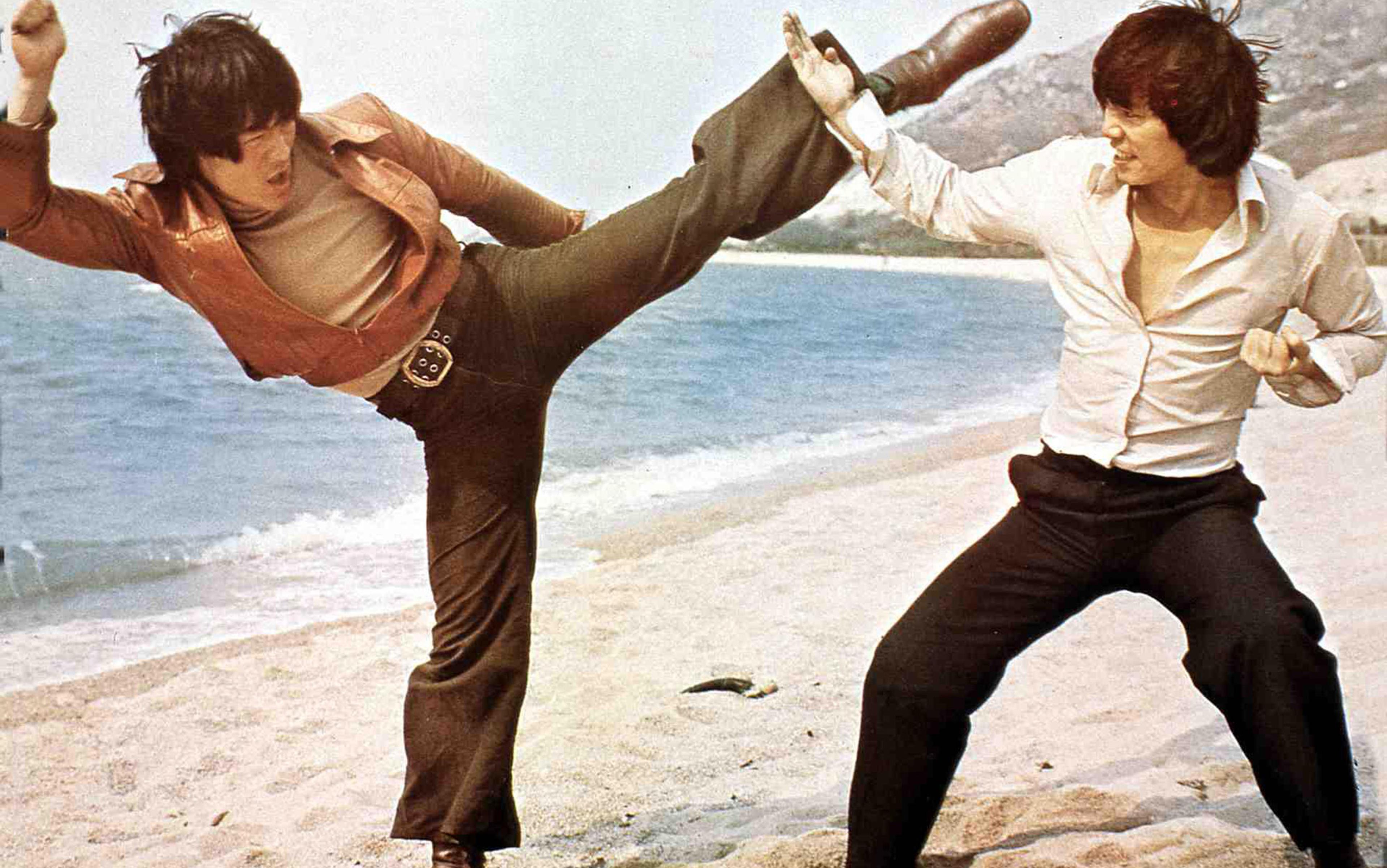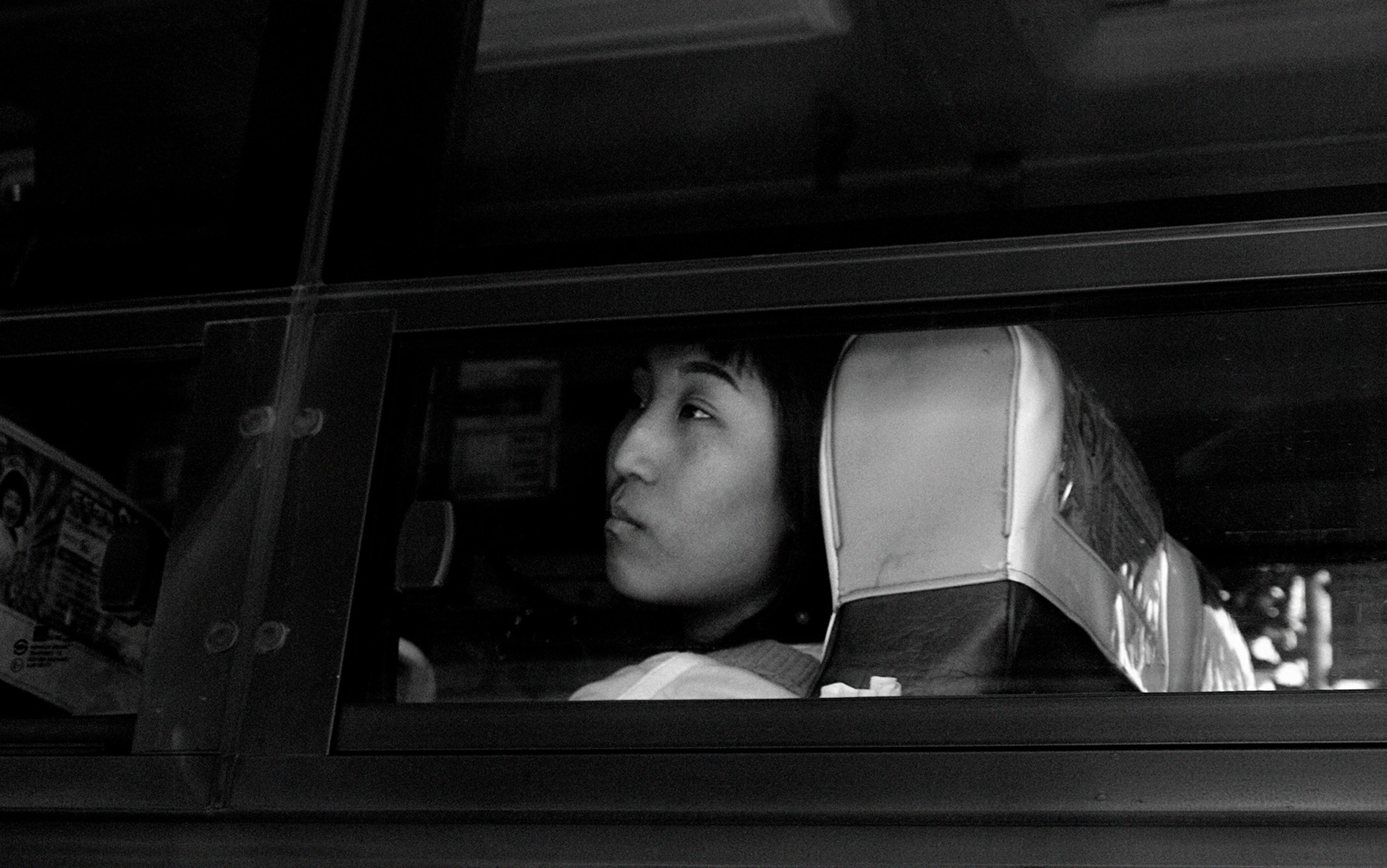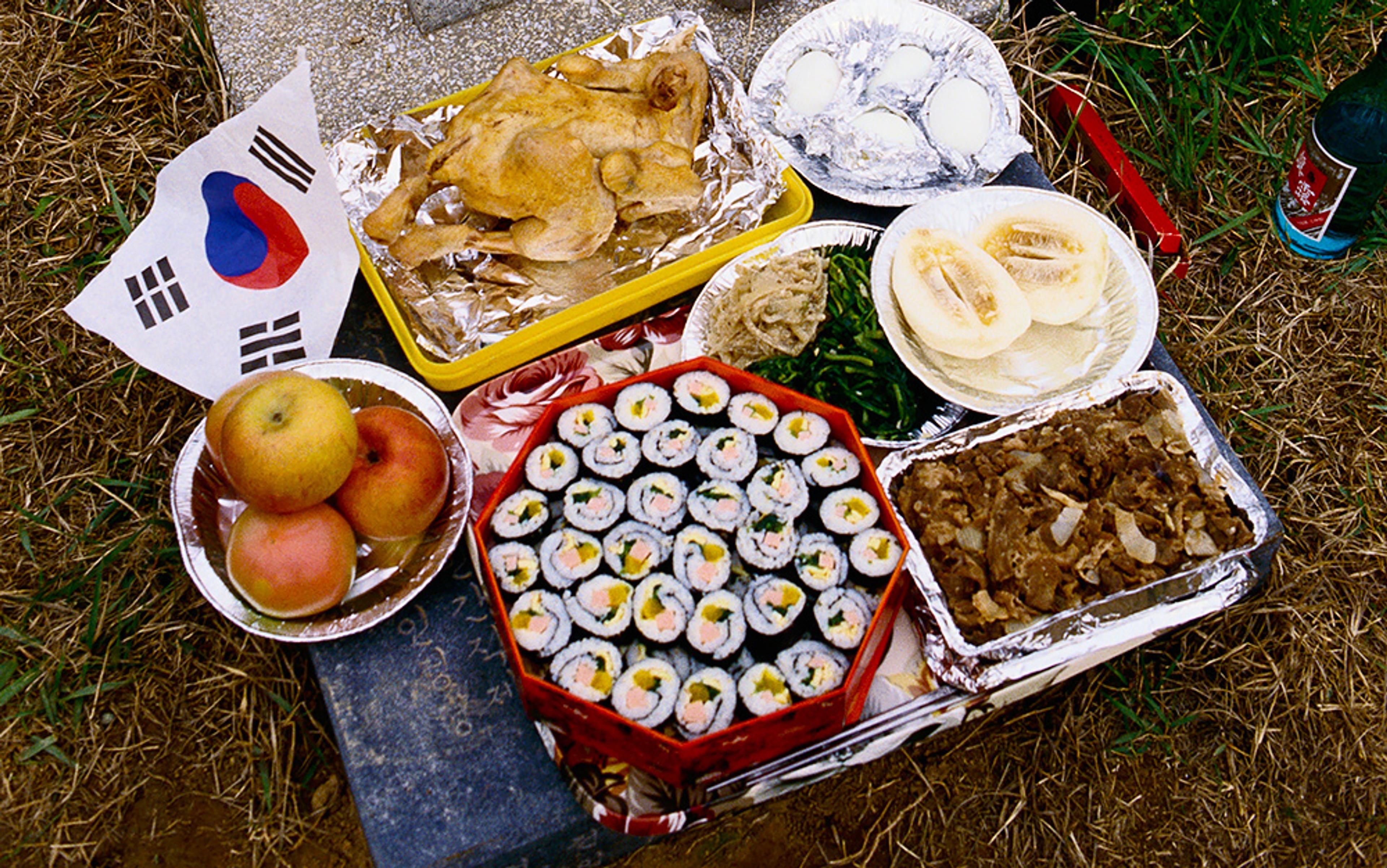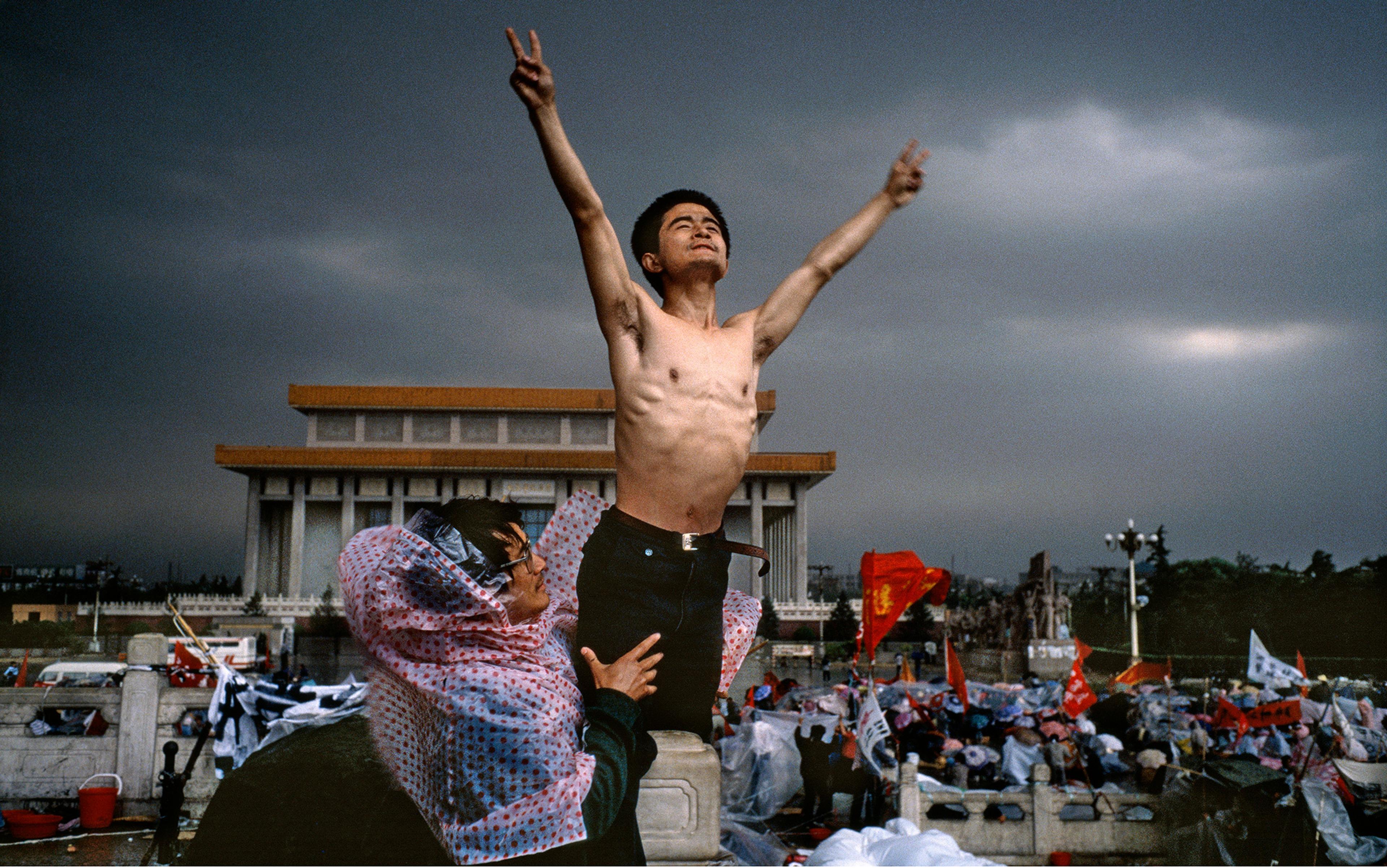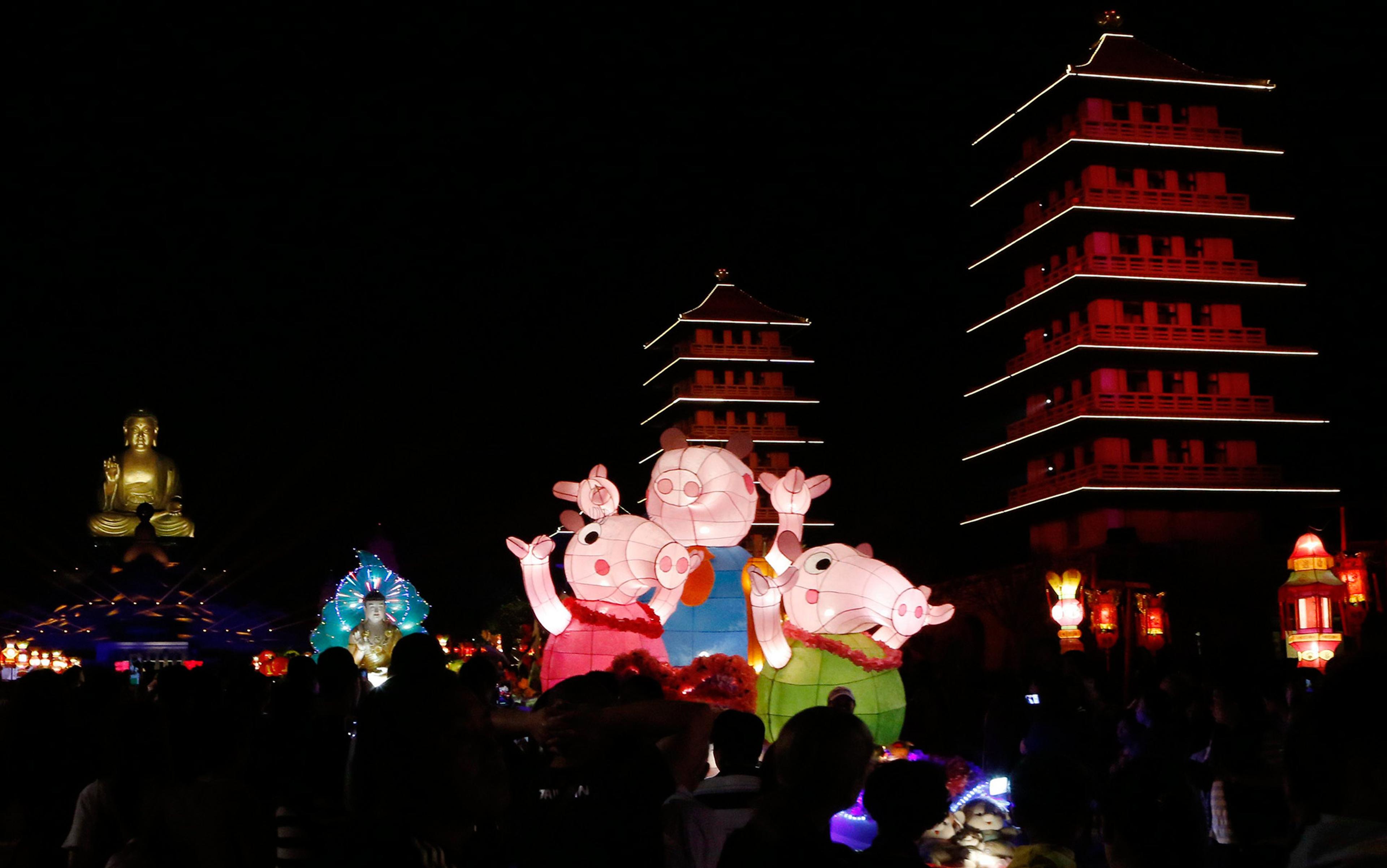What is this and who am I? is not ordinarily a question that crosses my mind when I’m ensnared in the earthly and freaky delights of Latin American wedding perreo. But as the DJ spun the last bars of a Bad Bunny single into the uncannily familiar nine-note ‘Oriental riff’, I froze. I turned to my partner. Is this a microaggression?
I could ask the same thing about the song that followed, ‘Kung Fu Fighting’ (1974):
There were funky China men from funky Chinatown
They were chopping them up, they were chopping them down
It’s an ancient Chinese art and everybody knew their part
From a feint into a slip and a kicking from the hip.
I probably hadn’t heard the disco earworm since I watched a bootleg DVD of the animated film Kung Fu Panda (2008) shortly after its release. The DreamWorks movie, which follows the life of a bumbling panda seeking to prove his worth as the unlikely Dragon Warrior, featured a cover of ‘Kung Fu Fighting’ by CeeLo Green and Jack Black, both non-Asian performers.
The song was originally written and performed by Carl Douglas, a Black artist; in his music video, clad in a silky red approximation of a karate gi, he chops and slices at the air with his elbows locked at 90-degree angles. From a dimly lit stage, he sings to an eager crowd. Every audience member there is white.
When DreamWorks produced Kung Fu Panda, the movie needed a tuneful theme song. And why reinvent the wheel? DreamWorks also produced a music video where Green and Black, with the asymmetrical necklines of their Mandarin-collar tunics safely secured with knotted frog buttons, mix breakdancing with inspirational messaging that deviates from the original song (‘Although the future is a little bit frightening / it’s the book of your life that you’re writing’). At the end of the video, when the students of the Kung Fu Panda Academy of Awesomeness kowtow to their shifu (master) out of respect, Green returns the bow, pressing his palms together. Respectfully.
How and why do Americans embrace Asianness? Douglas’s orientalising version of American performance – the version I know – busted straight through the doors of discotheques and movie theatres, and it prevails to this day. On the one hand, the 1970s was part of a new era of East Asian exploration: new waves of immigrants setting up their lives for the second time changed the United States’ cultural landscape for good, while student activists at San Francisco State University included Asian America in the diversity movement that was opening up in much of academia nationwide. That same era introduced a legacy of East Asian appropriation reflected in Kung Fu Panda that has never disappeared.
In the geopolitical theatre of the late 1960s and early ’70s, both Asians and Americans were dealing with the immediate after-effects of an internecine, capitalistic struggle against a communist bugbear. US-led conflicts in Korea and Vietnam directly influenced generations of people living in and between Asia and the US, often for the worse. US soldiers dehumanised the Asian enemy, painting them as communist vermin that needed eradicating.
During and after the Vietnam War, Hollywood blockbusters gleefully fanned the racist flames. The brown and yellow enemy was flattened hopelessly into a stereotype of super-soldier resilience in films like The Green Berets (1968) and Apocalypse Now (1979). In the films, hordes of Southeast Asian drones, who could make weapons out of nothing and terrorists out of nobodies, employed dirty guerrilla warfare to decimate the good guys. They were agile and especially skilled in close combat, fighting hand-to-hand without fear or remorse. The caricature is far from what I know of East and Southeast Asia, a place that feels like mine from another life. Yes, there are hordes of people but, rather than faceless bad guys, they are for the most part now composed of Instagrammers and motorcyclists. Were these caricatures meant to represent any reality known to Asian people? Can I recognise myself or anyone I know?
He bridged East and West with pure athleticism and onscreen charisma, not diplomats and state dinners
Around the same time, another sort of transpacific exchange was occurring, bringing another version of kung fu to US audiences. Legend has it that an impoverished Cantonese grandmaster opened a kung fu school after fleeing mainland China, in an effort to finance his opium addiction. In 1953, Ip Man, as he was known, reluctantly accepted a new student in his Hong Kong school, which focused on a style of kung fu called Wing Chun. The student, Lee Junfan, had been born in San Francisco but moved to Hong Kong as a child. He was a quick study, though his short temper made him prone to starting street fights and engaging in physical conflict, to the point of complaints to the police. Fed up, his parents sent him to live with an elder sister on the US west coast, where he began to open martial arts schools, and became a teacher himself. In Anglophone contexts, he went by the name of Bruce Lee.
Given his father’s fame as a Chinese opera singer, Lee was exposed to celebrity at a young age, but he did not encounter much luck in Hollywood at first. After several frustrating and racist snubs, he followed the advice of a producer to return to Hong Kong and pitch a kung fu movie there. Raymond Chow, a former Shaw Brothers executive, welcomed Lee gladly, midwifing two successful movies in quick succession: The Big Boss (1971) and Fist of Fury (1972). Through these films, Lee brought wuxia, Chinese martial arts fiction, to Western screens. Just as Lee was becoming a legendary name in US households, he died days before the release of his magnum opus, Enter the Dragon (1973).
Enter the Dragon crystallised the peak of Hong Kong kung fu cinema. Lee had successfully bridged East and West: but he’d done it with pure athleticism and onscreen charisma instead of diplomats and state dinners. People with a few bucks flocked to the movie theatre to watch Lee’s films and those of diasporic copycats. Variety magazine called the spinoff genre ‘chopsocky’, a punny neologism that praised Lee’s ‘James Dean aura’ but disparaged the nature of ‘badly dubbed Chinese-lensed pix that [would] go the way of those sleazy porno loops that once drew business simply because they were there.’
Whatever the producers’ initial intentions, the biggest audiences for chopsocky movies were young and Black. Films like Black Belt Jones (1974) and The Last Dragon (1985) exemplify the genre crossover of chopsocky and blaxploitation, a cinematic genre that centred Black protagonists but also caricatured them. Blaxploitation movies also peaked in the 1970s, inspiring breakdancing and parkour, movements that drew inspiration from East Asian martial arts. These highly skilled pursuits openly cite Lee as a cultural catalyst.
As much as Asian American kung fu ushered many people in, the genre also openly shut others out. Principal among the excluded communities were Asian and Asian American women. Perhaps due to the traditionally masculine nature of kung fu, directors cast overwhelmingly more male actors as leads. When women did appear, they were flattened into stereotypes: nameless sex workers, victims of sexual violence, or damsels in distress. Or they bent gender as men, like Cheng Pei-pei in the wuxia film Come Drink with Me (1966). Good old-fashioned machismo pervaded kung fu film sets and writers’ rooms; in addition to male-centred storylines, the Asian actors themselves believed women could not perform at the same standard. It’s a tale older than a wuxia storyline.
Americans did not stop at film when it came to consuming East Asianness. After decades of conflict, diasporas of real Asian women had become exploitable commodities. Both ‘yellow peril’, the belief that Asian immigration poses an existential threat to Western culture, and ‘yellow fever’, the sexual fetishisation of East Asian women, ran high. The former, a longstanding cultural attitude held over from the 19th century, led to explicitly racist scapegoating and cast Asian Americans as invading pests. The latter, often disguised as a dating ‘preference’ or ‘type’, combines elements of yellow peril with a good old-fashioned hatred of women. Hypersexualised, fetishised and dehumanised, Asian women continued to suffer at the intersection of racism and misogyny. My own life is punctuated by events that have intentionally fractured the myriad pieces of my identity, like many Asian women who have come before me, whose faces and stories have yet to show up in movie theatres.
Born in Kingston, Jamaica, Carl Douglas had immigrated to London and started working with the British Indian music producer Biddu when he encountered a group of teenagers playing pinball in an arcade. Allegedly, the group was punching and kicking in the style of Hong Kong action cinema, which prompted Douglas to pen the first lyric of his one-hit wonder. The same audiences in 1974 who filled movie theatres for chopsocky films gathered under the mirror ball for ‘Kung Fu Fighting’. Intended as the B-side of the single ‘I Want to Give You My Everything’, ‘Kung Fu Fighting’ rocketed to the top of Anglophone charts thanks to its basic disco beat and its indelible melody, based on the ‘Oriental riff’.
The pentatonic mini-anthem was an aural cue for catch-all Asianness, a tune popularised in cartoons and films like Lady and the Tramp (1955) and The Aristocats (1970). It helped that nearly anyone could dance to it, feigning martial arts moves while grunting on beat. Flying high on the success of his sleeper hit, Douglas attempted to replicate the track’s popularity by releasing another single in 1975, ‘Dance the Kung Fu’. You would be hard-pressed to find many musical differences between the two.
By the 1990s and early 2000s, East Asian stereotypes had become entrenched in Hollywood. The overt and casual racism of the Rush Hour franchise (1998, 2001, 2007) left both Jackie Chan and Chris Tucker the butt of the series’s many, many jokes. Among other racist scenes, there are moments where Tucker tells Chan ‘Y’all [Asians] look alike,’ and another where Tucker asks to be introduced to ‘a couple of them Chinese girls’ because he ‘want[s] a massage’. The action genre was not the only one that pigeonholed Asian actors into punchlines: there were comedies like Austin Powers in Goldmember (2002), in which the titular spy seduces Japanese twins ‘Fook Mi’ and ‘Fook Yu’, and films like Gran Torino (2008), in which the Korean War veteran Walt Kowalski rattles off various anti-Asian slurs.
Only animated characters or gun-brandishing white male actors could elevate kung fu above slapstick comic relief
Although wuxia films continued to be produced on the fringes, it seemed like, by the turn of the millennium, the martial arts fad of the midcentury had begun to fade from popular view. I have a Hong Konger father whose passion for the cultural artefacts of the 1970s and ’80s is second only to his love for dim sum. As a result, my pop culture education had its foundations in oblique references to Ip Man, the Hong Kong Phooey theme song, and Astro Boy’s limpid gaze.
However, contrary to my dad’s childhood watching Bruce Lee movies on a nine-inch television screen, my first real exposure to kung fu popular culture came from animation. First, I saw Disney’s animated film Mulan (1998) – a children’s movie with elements of kung fu and wuxia in the background. It was a formative queer text for me: I grew up watching the Chinese warrior Fa Mulan lead her blundering colleagues to triumph against hawkish Huns, leaning on chameleonic androgyneity to disguise her ‘real’ gender. Later, I was absorbed by animated animals making fat jokes. Kung Fu Panda was hard to resist.
By the mid-2000s, it seemed that it was only these animated characters or gun-brandishing white male actors who could elevate kung fu above slapstick comic relief. Audiences flooded cinemas to see the franchises of John Wick and Jason Bourne. The cultural bridge between ‘East’ and ‘West’ that Bruce Lee had constructed began to sag, straining at its girders. Where were the Asian Americans in the fray?
I am a historian now, but as an Asian American kid hitting replay on a pirated DVD, I am not sure how much I understood of kung fu’s legacy in the US. Were the animals Chinese? I recognised Mandarin words in characters’ names (masters ‘Oogway’ and ‘Shifu’). But if they were Asian or Asian American, I could not see myself in a noodle-slurping, bumbling bear who was living his goofy Bildungsroman through a series of martial arts antics, all while receiving mentorship from a cast of kung fu grandmasters.
Lots of things changed for me after Kung Fu Panda. I went through puberty, for one thing. I went to school, and later college, and later graduate school, where I read about yellow fever and yellow peril for the first time, even though I had known those hateful truths since I was little. I read the Asian scholars and writers Gayatri Spivak, Viet Thanh Nguyen, Cathy Park Hong, and so many others who articulated the tragedies and euphorias of Asia and Asian America. I came out and learned that a sense of humour and a proclivity for farce are good to have in your queer toolbox. I read up on diasporas and splintered concepts of home, and not belonging to any one place. The president of my home country blamed the coronavirus on Chinese people. Seven women died in the Atlanta spa shootings, six of Asian descent. I moved out of the US to a city where I grew so accustomed to harassment that I took to wearing a hat, sunglasses and a face mask whenever I left the house. And then, last year, I watched Everything Everywhere All at Once (2022).
As I watch the film, I cut off snorts of laughter with choking sobs, all in the same minute
There aren’t any Oriental riffs in Everything. Instead, there are sentient rocks, Bluetooth earpieces, dowdy outfits, moody lesbians, and so much Michelle Yeoh. And, as an extension of her, so much kung fu.
The 2020s needed Yeoh’s character, Evelyn Wang. And I, myself a moody lesbian, needed her. Contemporary films about Asian America, like The Farewell (2019) and Minari (2020), told family stories, vivid in their heart-wrenching verisimilitude. Everything chronicles a family, too: with absurdist peaks and agonising troughs, carried in the vehicle of Yeoh’s incredulous glares and intermittent shadowboxing. It begins to rhyme with Bruce Lee’s legacy, all while extending beyond it. As I watch the film, I cut off snorts of laughter with choking sobs, all in the same minute. That’s queerness. That’s Asian America.
‘East’ and ‘West’ are connected not because of some greedy yearning for Asianness by non-Asians, but because of the knotty tangles of transpacific diaspora. In the past, those cultural snarls were Bruce Lee as the proletarian regular guy seeking revenge in the name of justice. And now they’re a laundromat-owning, googly-eye-donning, middle-aged mom who knows her best in any universe might not be enough, but she keeps fighting anyway. That kind of performance can win you an Oscar. Glittering in a bright white gown, Yeoh accepted the award with a sated hunger in her eyes, as hot dogs fluttered in the background. The moment was just as it should have been.
To be clear, I left the dance floor at the wedding immediately – I was gone before Douglas launched into the chorus. There was a general wave of animosity towards the DJ anyway; dancers meandered towards the bar to top off their mezcal glasses. In between heartbeats, yearning for bass-heavy reggaeton to wipe my mind clean of cheap wisecracks about Asians, I answered my original question: this is history, and I am here.
